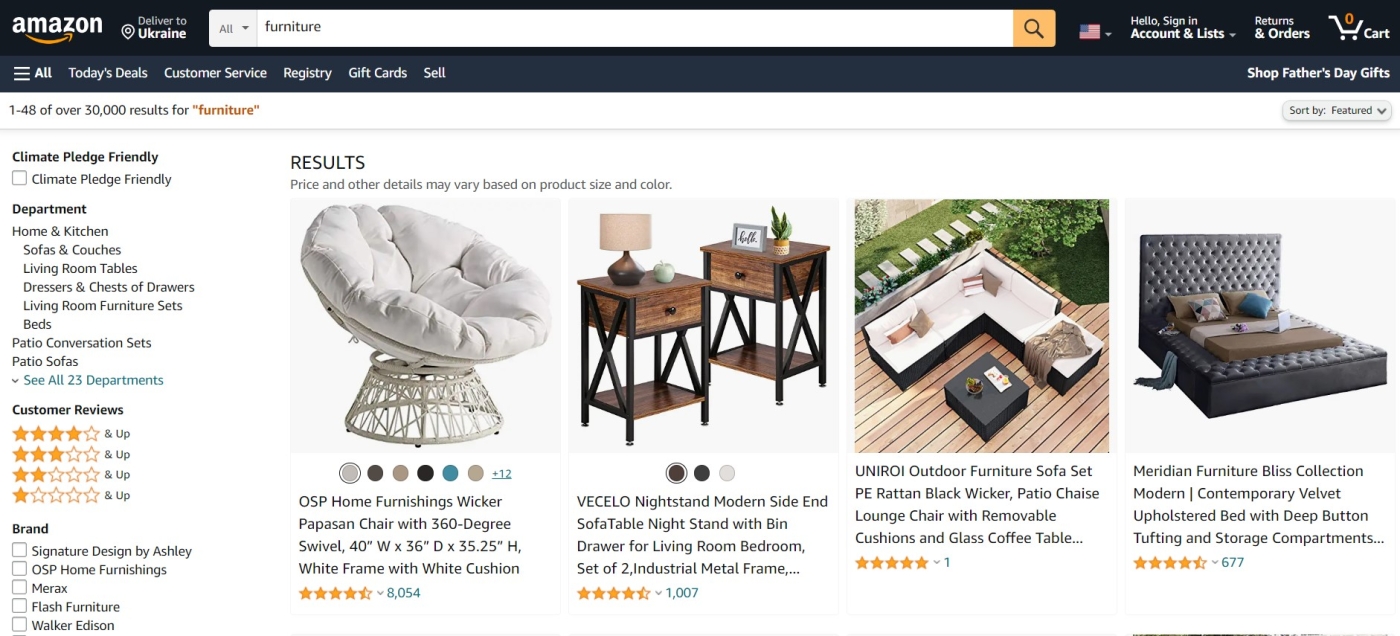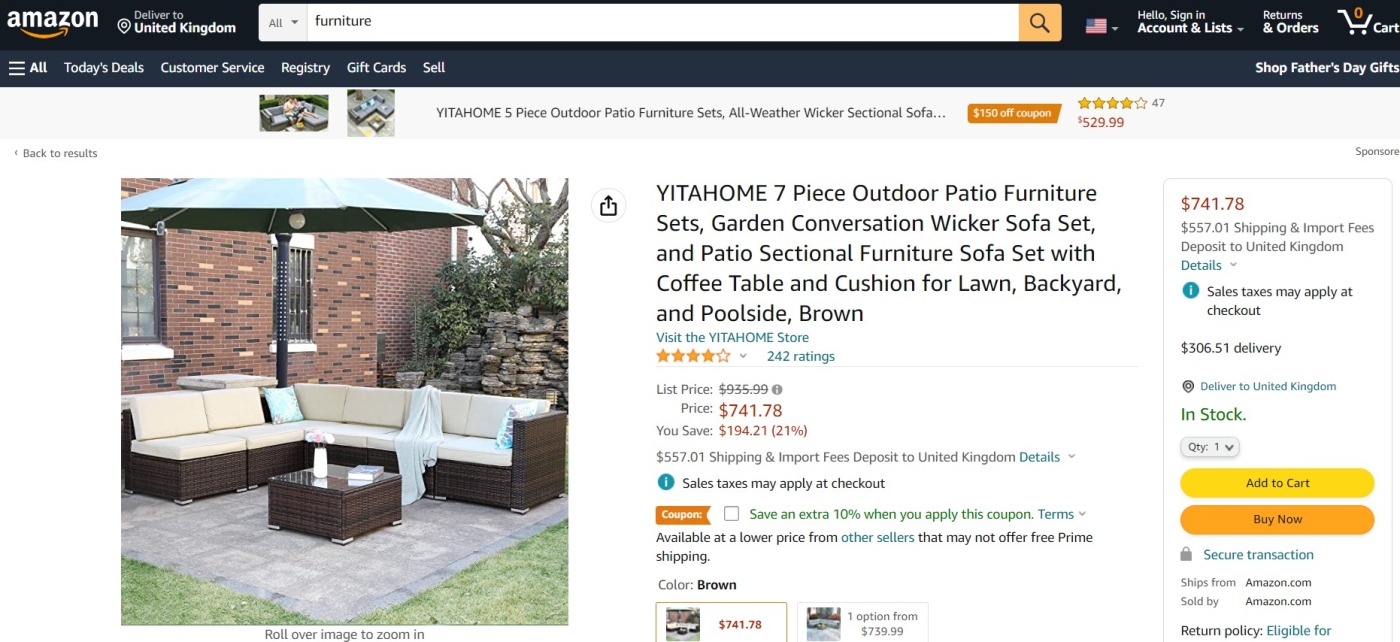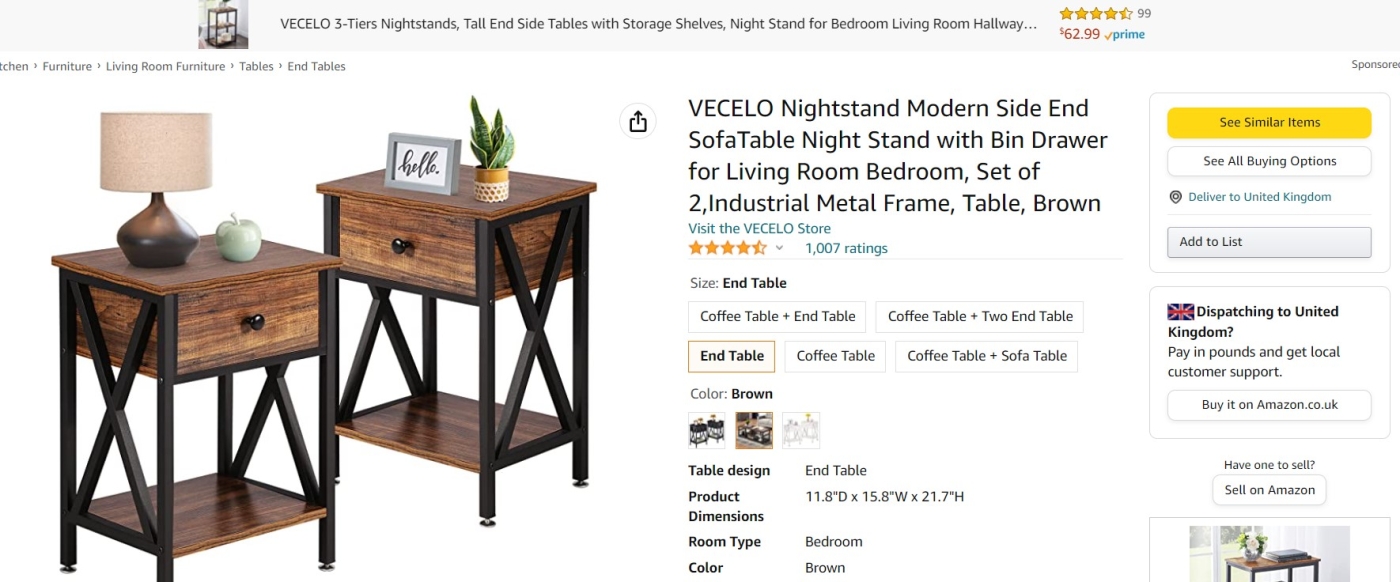Product Page:
5 Key Elements to Include
We all have heard about the importance of having a great product page. But not everyone knows how it should look so that website visitors turn into leads and then into customers.
Have you ever wondered what should be included on a product page to make it truly effective? And what elements can make it better and more attractive? Yes? Then let’s take it in order!
What is a product page?

A product page is a page on a site that shows information about a product, including its features, price, reviews, and customer ratings. It is the first thing a customer sees when looking for a specific product. In order to be effective for e-commerce, product pages should be user-friendly since people tend to stay on them longer than other pages.
Product pages have to:
- provide customers with all the information they need to make a decision (including pricing);
- promote a new product or service;
- introduce a product line extension or new feature;
- explain the benefits of using your products or services;
- make it easy for customers to buy your products;
- sell additional products based on what people already bought from you (cross-selling);
- create an experience for visitors that will make them want to return (up-selling);
- engage visitors with additional content like videos and testimonials;
- showcase your brand through imagery and copywriting.
Creating a product page that brings conversions is easier than you think. Our CGI studio has created a short guide to help you construct a tremendous product page.
What is the purpose of a product page?
It’s essential to ensure that every detail on the product page is well-thought-out, carefully designed, and works for your goal. Product pages need to be prepared to tell a story, they need to convey the lifestyle your brand represents. You can create a sense of belonging and make an emotional connection with your audience by talking about what matters to them.
Remember, the vital part of selling a product online is building trust. If you want people to buy from you, it is necessary to provide all the information they need, answer all the questions about the product, and convince the customer that this is exactly what they are looking for.
If you want your product page to be authentic, targeted, and tactical, here are the five must-have elements to include. Let’s look at what makes up a great product page and how you can strategically utilize these features.
#1. Presentation

The product page is the first impression your customers get of your brand and product. They say “the first impression is the last”, so the product page should be attractive, informative, and easy to navigate.
One of the first things you’ll want to do is to come up with a product title, description, and technical features. This is important because it gives people an idea of what they’re buying.
Here are the elements to be included in the product page presentation:
Title / Description
The title should be descriptive and engaging, clear and concise, but it’s also an opportunity for keyword optimization. This is where you can explain what makes your product unique, how it works, why you made confident design choices etc. You can also include bullet points with key features or benefits of using the product.
User experience (UX) / User interface (UI)
UX and UI are the two most essential elements that determine the success of a product page. If your product page doesn’t have a good user experience and interface, it will fail to convert visitors into customers.
The user experience (UX) is how a person feels about using your product page. It’s about ensuring that everything works together to provide an excellent experience for your customers.
User interface (UI) design is how the product page looks and feels. This includes colors, fonts, spacing, layout, and so on. UI design aims to create a visual hierarchy for the user to know where to click and what information to expect when they connect. Product pages need to be visually appealing but also functional enough so that visitors can find what they want quickly without getting frustrated or confused by complex navigation structures and menus.
SEO-optimization features (SEO)
SEO on a product page is a term used for optimizing the product pages for better ranking in the search results. It is one of the most effective ways to drive traffic to your website and increase revenue.
To rank at the top of the first page of the major search engines (Google, Bing, Yahoo) product page should include powerful keywords in the title and description of the product. Use headings of different levels (H1, H2), highlighting textual information, including relevant keywords in the product description, and internal linking.
Technical features
It should consist of all the technical information about your product, such as dimensions, the material used, weight, etc. Technical features are helpful for more complicated items like furniture or appliances where customers might want to know if something will fit in their house before buying it.
The listing of characteristics is one of the essential attributes of a product card, influencing our decision on the expediency of a purchase. The more detailed and objective you describe the product, the higher the probability of a successful transaction. When designing a product page, take care of its readability.
Product Images

For an e-commerce store, it’s crucial to have silo images on your product pages so users can easily navigate between different categories of products. This will help them find what they’re looking for quickly and easily and not get distracted by colorful pictures with other items. It also is a must-have element for the product detail page as it allows to examine the product closely on a neutral background.
A well-designed silo section allows you to showcase related products and upsells throughout your store. Using tabs & filters on your pages, you can organize all of your products by category or brand so customers can easily browse through them without getting lost or confused about what you have available.
Product images are the first things the customer sees and on what they base their initial impression on. Make sure these are clear, sharp, and represent your product well. You can use lifestyle images to emphasize how your product fits a customer’s lifestyle. Lifestyle images can also showcase multiple products in one shot, allowing you to include additional products within your e-commerce store without taking up too much space on the page itself.
Product 360-degree Views
A more ergonomic way to create visuals for your product pages is through 3D modeling and rendering. Use a 365-degree product view and detailed close-ups to create an immersive experience for your customers, allowing them to see your product from every angle. This is mainly useful if your target audience is buying from a mobile device, as it will enable them to zoom in on any part of the image and explore all the details.
Product Configurators
Another way to enhance a product page is by implementing 3D configurators, which are becoming increasingly popular. 3D configurators is a powerful gamification tool that allows potential customers to personalize the product in real-time by simple drag and drop. Thus, it is possible to sell products that do not even exist.
Product Videos
Also noteworthy is that sites featuring video on most product pages see a 68% larger average order value (AOV) than sites with video on only a few product pages. Harness the power of video with 3D animation which is more affordable and has no limits when it comes to creativity.
QR for AR
A QR code is a two-dimensional barcode that can encode text and other data types. Adding a QR code to your product page will help you connect with potential customers via mobile devices. Usually, when scanned with an application on a smartphone or tablet device, it redirects users to links to a website or social media page.
QR for AR allows potential buyers to see the object of desire, not just on the product page. A 3D model of the product can be viewed right at home in marketing because they allow customers to see the product presentation and try it on their terms. QR codes are becoming increasingly popular in marketing because they allow customers to interact with your brand on their terms.
#2. Trust – Reviews / Questions

Trust is a critical component of your e-commerce brand. It’s the difference between a one-time sale and a lifelong customer. That’s why it’s so essential to build trust on your product page. Reviews and questions are an essential part of this process, as they give shoppers a sense of validity.
Why do you need them?
Reviews and questions create transparency. They tell buyers everything they want to know about a product before purchasing. Having reviews and questions available on product pages helps build trust, leading to increased conversion rates.
If you’re not sure how to incorporate them into your product page, here are some tips:
- Allow shoppers to sort reviews by date or popularity.
- Allow customers to add photos and videos to reviews.
- Incorporate ratings in the reviews so that clients could evaluate their experience and product.
Content that helps the customer get what they need is crucial. It can come in a FAQ section, additional resources like educational guides, or a “chat support” – feature that allows customers to ask questions and get answers ASAP. These methods are an excellent way to build trust with customers and provide them with the answers they need for decision-making.
#3. Pricing

Many retailers miss pricing information on purpose which is a turn-off for many people. When potential customers shop online, they want to know how much a product costs and if there are any shipping or other expenses associated with the purchase (taxes, assembly fees, etc.).
If the company doesn’t have fixed prices, it has to include a price list with the range and their estimation formulas. Another alternative is adding a “Request a Quote” button on the product page which allows prospects to get a personal price for certain services and projects. This way you can handle each request individually instead of having customers add their information to your cart page and then send an email to confirm if everything is correct.
#4. Clear Call-to-Action Button

Call-to-action buttons are crucial for any marketing strategy because they help you convert visitors into leads, customers, and even influencers for your brand. The best CTA buttons are clear and concise. They tell users precisely what happens when they click on it. So if you want them to sign up for a free trial, make sure the button says “Free Trial.” If you want them to download a digital product, it says “Download Now.”
In addition to being clear about what will happen when someone clicks on your CTA button, make sure it’s large enough that people can see it clearly from a distance. You don’t want people to have to squint at tiny letters just because they’re trying to take action!
#5. Upsell / Downsell / Cross-sell

The upsell, downsell and cross-sell are the most powerful tools for boosting sales. Customers often buy products that go well with their purchase, so it is vital to show them the related items when they browse through your store. You can add related products to your main navigation menu or add widgets containing such recommendations on the product pages.
- Cross-sell is a technique of showing relevant products to current customers shopping in your store.
- Upselling is a technique of showing higher-priced items as an alternative to what a customer has currently placed in their shopping cart.
- Downselling shows lower-priced items as an alternative to what a customer has presently placed in their shopping cart.
Upsell encourages customers to spend more than they originally intended. It’s a great way to increase your average order value (AOV), but it can be tricky if you don’t do it right.
Here are some tips for using upsells effectively:
- show only relevant products;
- make it easy for customers to see all the options;
- use messaging for your target audience;
- offer discounts or other incentives.
Cross-selling increases average order values, provides a higher conversion rate, and decreases cart abandonment rates. However, it works only when buyers are already interested in purchasing something. Its goal is to increase the purchase size by encouraging customers to add more items to their orders.
The intelligent downsell helps increase sales because it makes it easier for customers to decide what they want to purchase next. They don’t need to spend time searching through their shopping cart or browsing your website looking for complementary products. Instead, customers will see them right on their product page, where they have already made a purchase decision!
If you’re creating your product pages from scratch, you’re officially equipped with the tools to construct brilliant product pages. In case you have an existing site, do an audit right now to ensure that you’ve built a quality page that reinforces the importance of your products and encourages action.
Your product deserves a professional presentation. As a photorealistic 3D modeling and rendering company for product design, we can make your product stand out from the crowd.
With photorealistic 3D models on product pages, your customers will be able to see precisely what they are getting before they buy it. Our 3D artists hand by hand using state-of-the-art software that lets us turn your ideas into reality. Every detail of your product can be captured in perfect detail and color — from its texture and material composition down to minor design elements.
We create photorealistic silo and lifestyle 3D rendering services, product animation, 360-degree spins, or even 3D models for configurators and AR shopping apps. Contact CGIFURNITURE now and let us together create outstanding high converting product pages!



Leave a Reply
Want to join the discussion?Feel free to contribute!